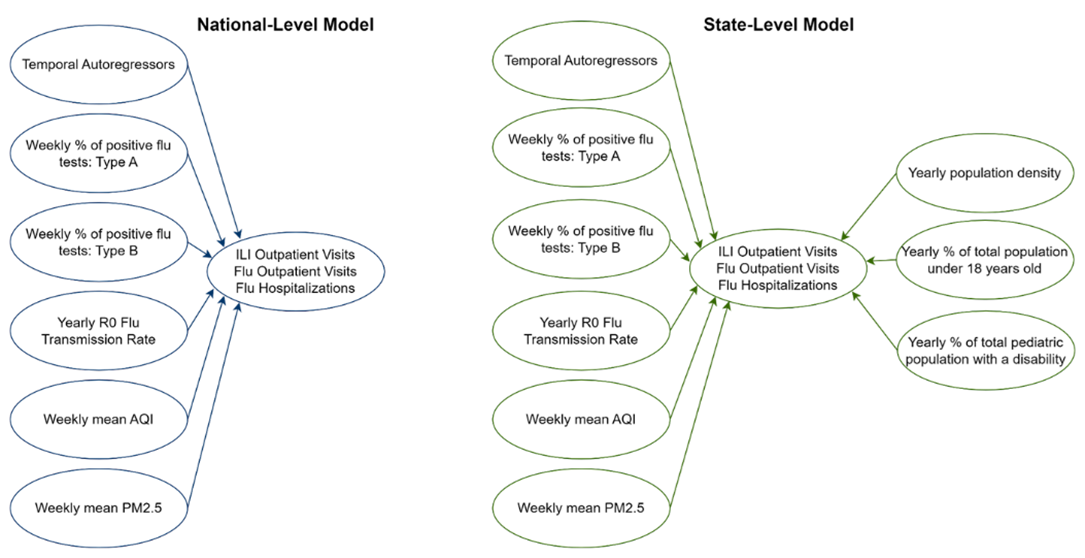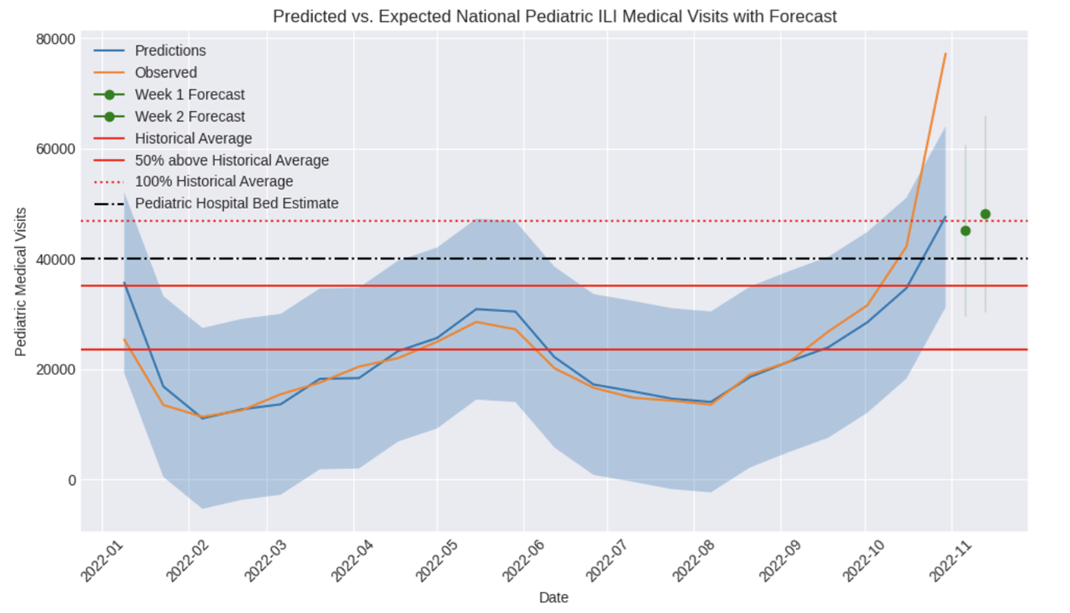

Adapt tools from COVID to other stressors and integrate public health considerations in the design of military facilities (e.g., installations, VA hospitals, etc.) that would be resilient to future compounding threats. ERDC and USACE have been engaged in the response to epidemiological concerns. There have been shortages in supplies and services needed to treat hospitalized patients or process the surge of disease-related deaths, particularly the protective equipment necessary for staff working in healthcare, fatality management, and related industries. There is a need to develop predictive tools for the forecasting of demand and subsequent allocation of limited resources by responsible agencies.
Model One: One week forecast
In our first model, we aim to predict patient surges one week ahead using historical data. The primary output variable represents the data for the following week.
Model Two: Two week forecast
In our second model, we extend the prediction horizon to two weeks ahead. To accommodate this, we create a new output variable which essentially represents the data for two weeks into the future by shifting forward one week.

Provides rankings of a models features based on their influence on model predictions
Both models utilize relevant covariates such as "month" and "dominance (perc a, perc b)" (for ILI Visits) or "AQ" (for Flu Visits and Flu Hospitalizations) to enhance prediction accuracy.
| National | State | ||
|---|---|---|---|
| Outcome | Top Covariates | Outcome | Top Covariates |
| ILI Visit | Strain Dominance & Month | ILI Visit | Strain Dominance & Month |
| Flu Visit | Air Quality Indicators & Month | Flu Visit | Population measures & Month |
| Flu Hospitalizations | Air Quality Indicators & Month | Flu Hospitalizations | Population measures & Month |
